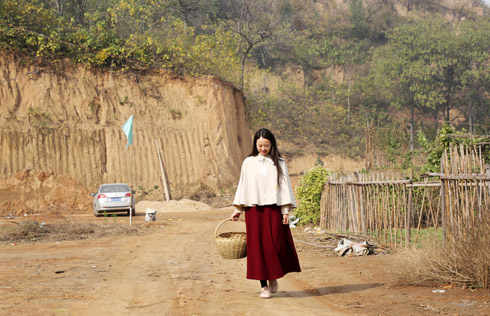Unraveling the mystery of Tibetan calendar
LHASA -- Tibetans will embrace the "Water Snake Losar" on Monday, which is New Year's Day in the Tibetan calendar.
For 2013, the date falls on the second day of the Chinese Lunar New Year and has been worked out by Tibetan experts on astrology and calendar calculations based on 2,000 years of research.
Their findings are compiled into the Tibetan calendar each year.
The calendar was the first "book" Tsering Dondrup read as a child, as his parents used to consult the calendar for weather information and look for ideal dates for ploughing and harvesting.
"We had a new booklet every year," said Tsering Dondrup, a gray-haired Lhasa resident. "The colors of the covers varied, but there was always a delicate painting of cattle ploughing the fields in early spring."
As he got older, he learned that years in the Tibetan calendar were identified with different colors including white, black, green, yellow and red. "Yellow stands for the year of the earth, while blue, green and red stand for water, wood and fire respectively," he said in an interview with Xinhua.
The year 2013, for example, is the "Year of the Water Snake," so the corresponding calendar has a blue cover.
However, the cattle ploughing scenes hold greater significance.
He said the calendars bear a fascinating history and continuing practical application that is often overlooked among more prominent elements of Chinese culture.
"The colors and postures of the cattle's head, horns, mouth, hooves and tail tell the weather conditions of different periods of the year and help farmers decide the time for ploughing and harvest," Tsering Dondrup explained.
When the cattle's head is painted green, it often forecasts heavy wind in spring. Yellow legs indicate a good harvest in valleys, whereas a blue belly suggests ample rain and potential flooding, said the calendar enthusiastic.
According to Tsetop, deputy head of the institute of astrology and calendar calculation, a research body of the Lhasa-based Hospital of Tibetan Medicine, a Tibetan calendar often has an overview of the year's climate, astrological phenomena and potential calamities. It also has a detailed list of dos and don'ts for each day and month.
"It provides an important timeline for Tibetans to figure out when to grow crops and harvest and what diseases may attack at different times of the year," he said
Many people also consult the calendar to choose auspicious dates for important events such as weddings, inauguration of new homes or funerals, said Tsetop.
Elderly people like to hang all the used calendars at home as a mascot to ward off evil, he said.
The compilation of the Tibetan calendar was a presentation of astrological research and calculations, says Kunga Rigzin, one of the institute's top researchers.
At 71, Kunga Rigzin has been working on calendar calculations for six decades.
Tibetan calendar calculations, a 2,000-year-old discipline, work out weather conditions on the basis of planetary movements, using the 12 zodiac houses and the five planets of Mars, Mercury, Jupiter, Venus and Saturn. The Calendar has 12 months in a year and every 60 years make a full cycle. The first Tibetan calendar is thought to have been produced in 1206.
"The calendar is derived from the Indian calendar tradition, but has taken in elements from China's interior regions, too, such as the five elements of water, wood, fire, earth and metal," said Kunga Rigzin.
He and his predecessors have given precise forecasts of solar and lunar eclipses, blizzards and earthquakes and their calculations have been praised by the Chinese Academy of Social Sciences.
Kunga Rigzin and his colleagues are invited to Tibet's regional meteorological station every March and September for medium and long-term weather forecasts.
Weather reports based on their astrological calculations have been broadcast daily by Tibet TV since 1993. "The program is very popular among viewers, who rely on these reports to arrange travel and agricultural production," said Liao Jian, head of the Tibet Meteorological Station's video department.
Today, more than 300,000 copies of the Tibetan calendar are printed every year. The booklets, popular in Tibet and other Tibetan communities in Sichuan, Qinghai, Gansu and Yunnan provinces, are also sold to Bhutan and Nepal.
























